2011 Pop Awards: The Best Photo Gear of the Year
We honor this year's very best, most influential and all-around coolest gear
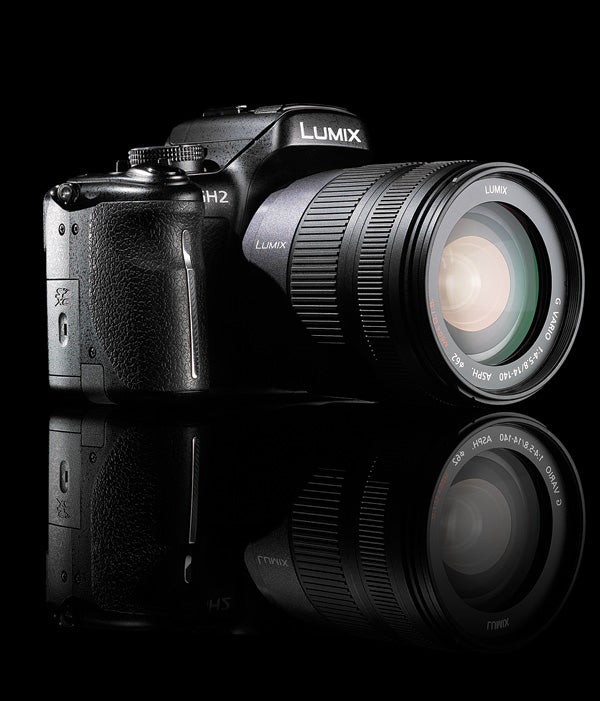
We may earn revenue from the products available on this page and participate in affiliate programs. Learn more ›
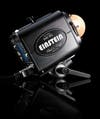
Best for the Studio:
Monolight This studio strobe is unusually light (4.31 lb) and compact for a 640 Ws monolight, has an unusually bright (250-watt) modeling lamp, and can be dialed down to an unusually low power (2.5 Ws) by way of—yes—an unusually short (1/13,000 sec) flash duration. This fan- cooled unit has a built-in optical slave, and can fire up to 10 times per second. ($500, direct; Paulcbuff.com)

Best for the Zooming Pro:
The long-awaited successor to the original pro workhorse telezoom, version II may well be worth the hefty entry fee if you are a serious photographer who needs fast, sharp, image-stabilized glass in a barrel with weapons-grade build and weather sealing. The newer lens is a substantial optical upgrade over version I, with improvements across the board in SQF, light falloff, and especially distortion control. IS tested out to up to 4.5 stops extra handholdability—which ties the top IS test results. ($2,380, street; USA.Canon.com)
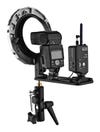
Best for the Flash Fan:
This past year we have seen this item used by several of our pro contributors— it’s a near-universal adapter for using shoe-mount flashes in studio setups. Designed by photographer Bruce Dorn, the Slipper has a cold shoe for a flash, a rotating adapter ring for Westcott softboxes—including the 7-foot Octabank—a heavy-duty tilting lightstand bracket, and a lightstand stud. One caveat: The adapter ring is incompatible with many non-Westcott softboxes. ($230, street; FJWestcott.com)
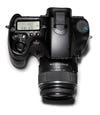
Best for the Speed Freak:
With this transmissive-mirror camera, the electronic viewfinder officially came of age. The 2.35-million dot OLED finder is so clear, and redraws so rapidly, that many users at first think it’s an optical prism finder. Shooting speed—up to 12 fps—superfast and sensitive AF, excellent overall image quality from the 24.3MP sensor, beefy construction, and more add up to an obvious POP winner. ($1,400, street, body only; Sonystyle.com)
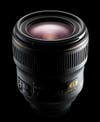
Best for the Wedding:
Two huge reasons to spring for this lens: Available-light candid shooting and wedding work where you want defocused backgrounds—not to mention brides by candlelight. This beautifully made optic proved to be one of the best high-speed wide-angles we’ve ever tested, and it has fast and silent autofocus. ($1,620, street; NikonUSA.com)
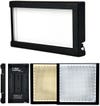
Best for the LED User:
Unique Led lights with an efficient diffusion panel, LitePads are available in tungsten or daylight white balance in six sizes from 3×6 to 24×24 inches. The illumination is quite soft, making it suitable for head shot stills or talking head videos (but not for larger or non-stationary subjects). At less than 1 inch deep, they can be used in cramped quarters, run cool, and use minimal power. ($560, street, for 12×12-inch size; Rosco.com)

Best for the Outdoorsy:
What a body! Heavily sealed against dust and moisture, the K-5 was literally blizzard-tested by our staffers and it passed splendidly. Its magnesium-alloy shell is covered in very grippable rubber and is nicely contoured for human hands. The 16.3MP K-5 is also Pentax’s first K-series DSLR to achieve an Excellent overall image quality rating, maintaining Wxcellent resolution up through ISO 12,800. ($1,500, street, body only; Pentaximaging.com)
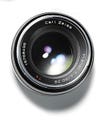
Best for the Connoisseur:
This wonderfully sharp, fast normal lens, with its buttery smooth, finely geared manual focus, says “video” loud and clear. With low distortion and almost no light falloff, it no doubt will appeal to traditionalist still shooters. both groups will appreciate the superb construction— including the metal lenshood—and excellent markings. ($725, street, Zeiss.com)
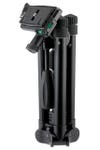
Best for the Space-limited
The tripod for people who hate tripods, the UT 45L is the most compact tripod (11.6 in., folded) that reaches what’s considered eye level (61.6 in.). The single-twist leg locks make for quick setup and breakdown, and the legs splay out for ground-level use. The included PHD-42Q head has a quick-release mechanism, two bubble levels, and pan/tilt controls with separate locks. While it’s specified for a 6.6-lb load capacity, we wouldn’t push it that far, and for maximum steadiness, it would be best to use it with ballast. ($150, street, Velbon.co.uk)
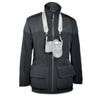
Best for the Fashionista:
Ever seen a photo jacket that you wouldn’t be embarrassed to wear around town? We have: this insulated, waterproof, wind-resistant Lino model, in stylishly slimming matte black. The larger pockets include removable protective-padding inserts, can be expanded to hold lenses or flash units, and can be contracted via zippers to function as traditional coat pockets. ($500, street; Manfrotto.com)

Best for the Printmaker:
You’ll need a helper, and preferably two, just to lift and position this 115-pound monster. but it produces gorgeous wide-gamut prints up to 17×24 inches on cut-sheet paper, and up 17 inches wide on roll-feed paper—and does them fast. The 11 ink tanks have a very high capacity at 200 milliliters. The matte and photo black ink tanks switch automatically, and a special black & white driver helps make neutral or toned monochrome prints. ($2,500, street; Epson.com)

Best for the B&W Lover:
Fans of our Fix It Fast department know that this has become our go-to program for monochrome conversions. It’s easy and fun, as well as being powerful and flexible. Besides being a faster and more elegant converter than the ones in Photoshop, its U Point Technology lets you easily apply different amounts of tone, contrast, and other effects to specific areas of the image. ($200, direct; Niksoftware.com)

Best for the Tripod:
Shooters who do both stills and video can have a head problem: The three-way pan/tilt head that’s right for video doesn’t allow the fast composition that a ballhead does, but there’s no way you’re going to get smooth video panning with a ballhead. This Manfrotto is two heads in one: A swich toggles between ballhead operation and fluid pan/tilt movement. Made of light magnesium, it has adjustable friction, a quick-release shoe, a panning lock, and a removable panning handle that reverses for right- or left-handed operation. ($350, street; Manfrotto.com)

Best for the Gear-lugger:
30L Backpack designed by photographers while on safari in Africa and made of tough, lightweight fabric of the sort used in America’s cup sails, this 4-pound pack can hold lenses up to 800mm, and pro-level dSLr or medium- format bodies. The butterfly-opening front flaps keep you from exposing your equipment to the elements, and the backpack straps tuck in and stow. ($429, direct; Guragear.com)
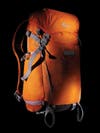
Best for the Hiker:
We call this a solid hiking pack because it’s almost literally true: A rigid plastic back panel acts something like a hiking frame. Made of water-repellent ripstop fabric, this lightweight (2.9 pounds) pack has enough room for a DSLR with integrated vertical grip with lens attached, plus an additional lens. Side access to the well-padded camera compartment means you don’t have to take the bag off to get your camera or change a lens. It has tripod straps, pockets and compartments galore, and a built-in waterproof rain cover. ($200, street, Lowepro.com)

Best for the Price:
You’re probably sick of hearing about “the greatest Rebel yet,” but sorry, Canon keeps turning them out. This latest greatest boasts an 18MP sensor that turned in Excellent overall image quality in our lab tests, a fine-grain 1.04-million dot LCD that tilts and swivels, and—an important first for a Rebel—wireless control of TTL flash units via the built-in unit. Plus you get fast and sensitive autofocus, ISO speeds to 12,800, and well-thought-out controls. The articulated screen comes in handy for video, which this Reb captures at full HD 1920x1080p30, although autofocus is iffy at best during video. Add it all up and we say it’s the best DSLR you can get for $900 with lens. ($900, street, with 18–55mm f/3.5–5.6 Canon EF-S IS lens; USA.Canon.com)
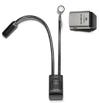
Best for the Pen Pal:
The Penpal PP-1 attaches to the camera accessory port and uses Bluetooth to send photos from the camera to a smartphone, computer, or other Bluetooth-enabled device. The Macro Arm Light MAL-1 also attaches to the accessory port, and works off the camera battery to power two LED lamps on 6.7-inch goosenecks that can be positioned every which way. (pp-1, $55, street; Mal-1, $50, street; OlympusAmerica.com)

Best for the Busy Editor:
Lightroom 3 was introduced mid-2010, but we wanted to spend more time working with it before handing out an award. In the meantime, Adobe has been adding lens profiles to its distortion correction engine, so now tons of lenses are supported. The highly improved and intuitive import process, vastly better noise reduction, and tight Photoshop integration make this a POP winner. ($299, direct; Adobe.com)

Best for Fisheye Fun:
The sole full-coverage fisheye lens in a Micro Four Thirds mount, this Rokinon takes in a breathtaking, wildly curved 180-degree angle of view. Like other Rokinons we’ve tried, it makes up for its no-frills operation (manual aperture and focus only) with a solid build and excellent finish. And it can make for wackedelic video. ($300, street; Rokinon.com)
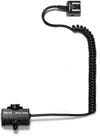
Best for the Trio Flasher:
If you’re a Nikon or Canon shooter into the Quantum Trio flash system, this accessory allows full TTL wireless flash control via radio signal rather than the more limited IR control of those DSLRs’ systems. You get far greater range plus the ability to transmit in bright light, around corners, and through walls. ($130, street; QTM.com)

Best for the Prime Maven:
In our test shootout of four top-notch 85mm f/1.4s last spring, this Sigma entry edged the other competitors by a hair in SQF and was also the least expensive by far. Plus it’s available in the most lensmounts. The usual Sigma attention to detail includes a lenshood that comes with an adapter to lengthen it for use with APS-C-sensor cameras—neat! ($970, street; Sigmaphoto.com)
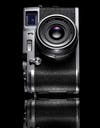
Best for the Stylish:
Quirks, it has a few, but then again, you need only pick up this jewel-like camera to overlook them. Designed like a classic rangefinder (and you know which one), the X100 has two viewfinders in one: a crystal-clear optical bright-frame finder that can switch in a wink to a fine-grain electronic viewfinder that provides 100-percent framing accuracy at any distance. The fixed 23mm f/2 (35mm equivalent) lens, with an aspheric element plus high-refractive-index glass, showed virtually no light falloff and without a doubt contributed to the camera’s fine showing in our resolution tests. Overall, it earned an Extremely High image quality rating. About those quirks: Too many controls are lost in menus, and the camera will capture only JPEGS (not RAW) at ISO 100 and 12,800 (huh?). But it’s so pretty… ($1,200, street; Fujifilm.com)